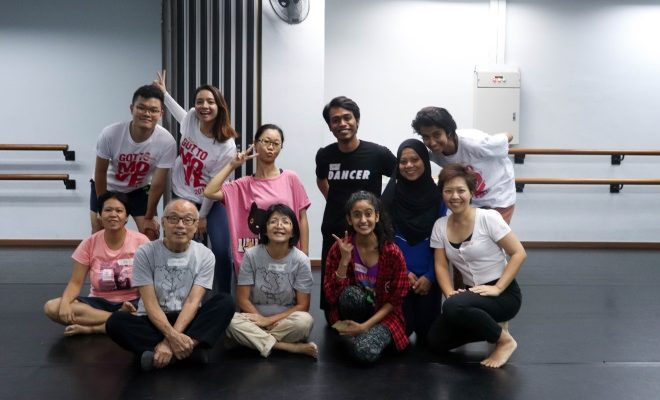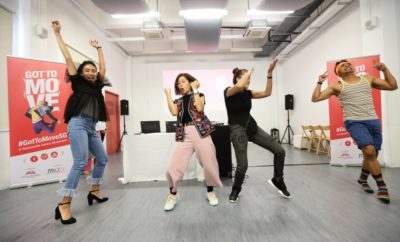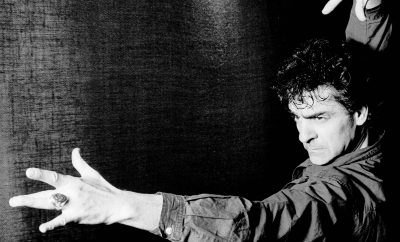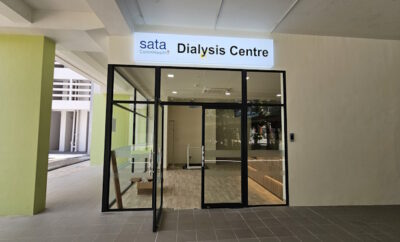
Health x Wellness
Creating a safe place for multiple generations to dance at Got to Move
The Got to Move event is into its third year and runs until the 29 October, 2017
One of the dance workshops catering to multi-generation participants – called Anybody Can Dance (ABCD) – is organised by Creatives Inspirit, a creative arts company. On 29 October, Creatives Inspirit will be hosting a mass zumba in the park event and experience to help demonstrate how dance is an accessible form of art that everyone can engage in.
We speak with Shanice Stanislaus, Founder and Director of Creatives Inspirit about taking part in the Got to Move event and how she sees a joy and vibrancy when participants from all ages take part in her workshops.
The Active Age (AA): Is this the first time that Creatives Inspirit is participating in Got to Move?
Shanice Stanislaus (SS): Yes, it is and we are so happy and honoured to be part of this year’s Got To Move initiative by the National Arts Council! Creatives Inspirit is a young creative arts company that aims to nurture all kinds of creative talent through mediums of clown arts, physical theatre, dance theatre, film and other forms of multi-disciplinary work. We are a strong advocate for empowering the individual to be a creator, performer or change-maker, regardless of sickness, disability or lack of performance experience. As such, the AnyBody Can Dance (ABCD) Programme is our effort to create an education and outreach programme aimed at the wider public on different audience levels to promote the idea that any kind of body is able to dance, regardless of ability or skill level. Essentially, we are a bunch of young and active people ready to make others play and move!
AA: What have you learned from organising such events for multi-generational participants?
SS: We absolutely love it! We realised that there are not enough dance programmes for kids, elderly, people who suffer from sicknesses or disabilities, people who do not have the money to afford such programmes or even people who are new to the dance scene. As such, we wanted to fill the gap for that by creating a non-judgemental space for them to dance and move, be their own choreographers and really redefine the dance experience for themselves. Ultimately, never underestimate the individual and whatever life experiences they bring to the class is as equally worth whether they are a child or a 75 year old. When we allow them to play and create, the most beautiful moments happen organically!
AA: How do you think such activities can benefit your participants?
SS: The basis of our workshops is ‘Le Jeu’, the art of play used in the context of dance and movement. We told the participants that the workshop was designed in a series of games and all they had to do was to play the games, with no right or wrong and no pressure to treat the experience like a school class. Play itself creates an atmosphere of non-judgment and freedom to really express and that creates the mental space to move around and be creative. Therefore, our conceptions of restrictions to dance such as age or illness or lack of experience dissolves with play, and consequently helps the participants to really be less self-conscious and enjoy the class. As the class is rather active, with the use of play through short series of games, the participants do not realise they have been exercising, moving around or dancing because they have been busy laughing and goofing around. All in all, this helps to empower the individuals, whether a child or adult, that really any kind of body can dance and we emphasise that throughout, especially even as facilitators, we are also not afraid to make a fool out of ourselves in order to explore what our body can truly create.
AA: How do you hope to make such activities reach out to more participants?
SS: We care a lot about individuals who do not have such an opportunity to experience this kind of activity. Therefore, we really want to work with welfare organisations to grant this demographic more access to dance through the medium of play. It is our greatest hope to continue our community engagement and outreach and we are so thankful for the Got To Move initiative which has helped us gain more visibility amongst the welfare organisations we invited to the workshops.
AA: What are some of your favourite moments in organising this activity for Got to Move?
SS: So many! In our Play Through Movement kids class, we received a kid who had a disability. When he first came, he was holding tightly onto his sister and refusing to part from her. The moment we started to play games, he became super excited and split from her, playing around in his own way. It was very beautiful to see that he was having so much fun and really buzzing around with maximum energy, dancing and playing with us at times. In our kids workshop, we teach world rhythms by recreating the experience of travelling from one country to another through having our volunteer play a live accordion to bring them around–this kid loved it so much that he would follow everyone. It was our favourite moment because it was his favourite moment too! Another highlight was in our adults class where we had a 75-year-old man and his wife come to the workshop. In one of the games, they were made to pair up with someone they did not know. He paired up with a young 26-year-old volunteer and they had the most mesmerising movements and an intense connection. We rarely see an intergenerational duet but in that moment, it was the most touching duet we have seen.









